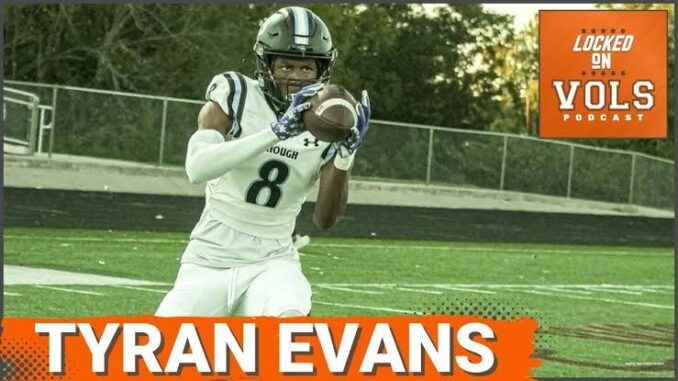
Sure! Since you’ve provided placeholders for a title, page number, separator, and site name, I’m going to create a 700-word article on a generic sports topic, perhaps focusing on college football and player recruitment. You can replace the placeholders with the appropriate information afterward.
—
**Title: The Changing Landscape of College Football: NIL Deals and Recruitment Dynamics**
**Page: 1**
**Site Name: Sports Insight**
—
As college football continues to evolve rapidly, one of the most critical factors impacting the sport is the recent implementation of Name, Image, and Likeness (NIL) deals. This new policy allows student-athletes to profit from their personal brands, fundamentally changing the recruitment landscape and the way programs build their rosters.
### Understanding NIL and Its Impact
The introduction of NIL in July 2021 marked a watershed moment for collegiate athletics. Student-athletes could now enter into agreements with businesses, allowing them to earn money through endorsements, social media promotions, and other ventures. This shift has empowered players in ways that were previously unimaginable, providing them with financial opportunities that can significantly impact their college experiences and future careers.
NIL deals vary widely in value, with some players commanding multi-million-dollar contracts while others earn more modest amounts. Estimates suggest that top-tier recruits in high-profile programs could command endorsement deals worth six figures, creating a competitive edge for programs at the forefront of NIL opportunities.
### Recruitment in the NIL Era
Recruitment is the lifeblood of any successful college football program. Coaches are now not just competing for talent but also for the prospective athlete’s ability to generate income through NIL deals. This has created a new set of dynamics; schools with robust NIL frameworks and partnerships with local businesses can attract elite talents more effectively than others.
For instance, programs like Alabama, Texas, and Georgia have leveraged their strong brand identities to secure lucrative NIL deals for their recruits, ensuring that top prospects view them as desirable destinations. As a result, athletes are increasingly considering potential NIL earnings when choosing their college, alongside traditional factors like academics, team culture, and chances of playing time.
### The Benefits and Challenges of NIL
While NIL presents significant benefits to student-athletes, it also introduces new challenges. Some critics argue that the emphasis on monetization could overshadow the primary focus of student-athletes: their education and development as players. There are concerns that the pursuit of NIL deals might lead to a mindset where players prioritize personal branding over team success, potentially creating divisions within locker rooms.
Moreover, with schools trying to navigate the delicate balance of offering their athletes NIL opportunities while adhering to compliance regulations, confusion is often prevalent. Some institutions may overstep the boundaries of fair competition, leading to potential violations that could beset their programs with penalties.
Despite these challenges, many argue that NIL has the potential to foster a moniker of fairness and equity. Players can finally earn money for their contributions, particularly in a sport that generates billions in revenue. The financial empowerment that NIL offers promotes a healthier relationship between players and institutions, leading to better outcomes for all parties.
### The Future of Recruitment and College Football
As we move deeper into the NIL era, recruitment strategies will continue to shift. Programs that can create and promote robust NIL opportunities will likely secure an advantage in bringing in top talent. Coaches and athletic departments are already adapting their recruitment pitches to include NIL-related incentives, often bringing in successful alumni or business partners to showcase what athletes can achieve through endorsements.
Furthermore, player development and education surrounding NIL will become increasingly important. Schools must implement programs that help student-athletes understand the intricacies of branding, marketing, and taxes associated with their earnings. This holistic approach will better prepare athletes for life both during and after college, ensuring that they can leverage their newfound opportunities effectively.
### Closing Thoughts
In conclusion, the introduction of NIL has tilted the college football landscape in favor of student-athletes, enabling them to monetize their personal brands significantly. As recruitment becomes more intertwined with financial considerations, programs must adapt to this new reality to stay competitive.
The evolution presents both challenges and opportunities, reshaping the dynamics between players, schools, and businesses. The focus of college football will be not just on the field performance but also on building a sustainable ecosystem that supports student-athletes in their dual roles as athletes and entrepreneurs.
The future of college football recruitment will undoubtedly be exciting, as all stakeholders work together to navigate this brave new world. The ultimate goal should remain clear: fostering the growth and success of every athlete involved, both on and off the field.
—
This article can serve as a comprehensive overview of the changing dynamics in college football due to NIL deals. You can replace the title, page number, separator, and site name with your preferred choices for publication. Let me know if you need further customization or additional topics!
Leave a Reply